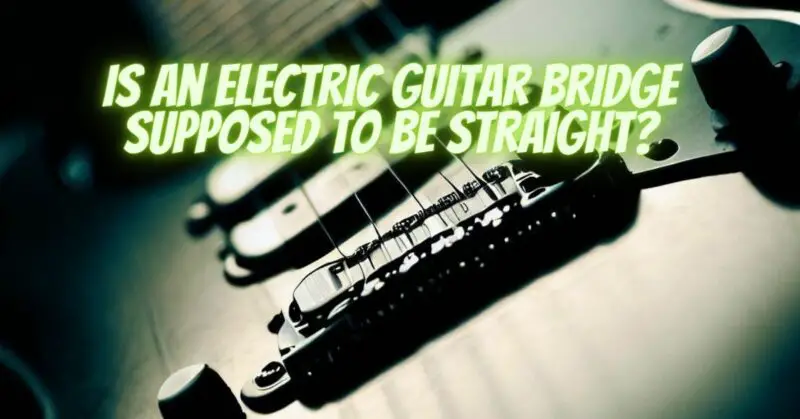Electric guitars come in various designs, each with unique features and components that affect playability and tone. One essential component of an electric guitar is the bridge, which plays a crucial role in transferring string vibrations to the body and influencing the instrument’s overall feel. One common question that arises among guitarists is whether an electric guitar bridge is supposed to be straight. In this article, we’ll explore the significance of the bridge’s alignment and the factors that determine whether it should be straight or have a specific angle.
The Electric Guitar Bridge: An Overview
The bridge of an electric guitar serves several critical functions:
- String Anchoring: It holds the strings in place, maintaining tension and facilitating vibration.
- Intonation Adjustment: The bridge saddles can be adjusted to set the intonation, ensuring that each string plays in tune along the entire fretboard.
- Action Height: The bridge height affects the action, or the distance between the strings and the fretboard. The action height can significantly impact playability and tone.
Is the Electric Guitar Bridge Supposed to Be Straight?
The straightness or angle of an electric guitar bridge largely depends on the guitar’s design, type, and intended playability. Here are three common configurations:
- Flat Against the Body (Straight): In this setup, the bridge plate sits flat against the guitar body. This configuration is typical for solid-body electric guitars like the Fender Stratocaster or Gibson Les Paul. A flat bridge offers stability, minimal pitch modulation, and straightforward intonation adjustments.
- Tilted Forward (Angled Towards the Neck): Some electric guitars, such as the Gibson SG or some Fender Telecaster models, have a slight forward tilt of the bridge. This setup can provide a vintage feel, warmer tones, and smoother bending, making it ideal for blues, rock, and classic rock styles.
- Tilted Backward (Angled Towards the Bridge Pickup): In contrast, certain electric guitars have a slight backward tilt of the bridge. This configuration, found on some Fender Telecasters and Jazzmasters, emphasizes brightness and clarity, making it suitable for genres like surf rock and alternative music.
Factors Influencing Bridge Alignment:
- Guitar Design: The guitar’s design, such as whether it’s a solid-body or semi-hollow body, can determine the bridge’s alignment. Solid-body guitars tend to have straight bridges, while semi-hollow or hollow body guitars may have angled bridges for enhanced resonance.
- Playing Style: Your preferred playing style significantly influences the bridge setup. If you use the tremolo arm extensively for pitch modulation effects, a slight tilt may be beneficial. Conversely, if you prefer stability and straightforward tuning, a flat bridge may be preferred.
- Tonal Preferences: The bridge’s alignment can affect tone. A flat bridge typically provides a balanced tone, while a tilted bridge can add warmth or brightness, depending on the direction of the tilt.
- String Gauge: The gauge of your guitar strings can influence bridge alignment. Heavier-gauge strings may require a flatter bridge for proper tension, while lighter strings can work well with a slightly angled bridge.
Whether an electric guitar bridge should be straight or angled depends on various factors, including the guitar’s design, playing style, and tonal preferences. Each configuration offers unique advantages and tonal characteristics. The key is to find a bridge setup that allows you to play comfortably, achieve your desired tone, and maintain proper intonation and action height. Experimentation with different setups can help you discover your unique sound and playing style. Remember that the perfect bridge alignment is a personal journey, and seeking guidance from a professional guitar technician or luthier can be valuable in achieving your ideal electric guitar setup.


